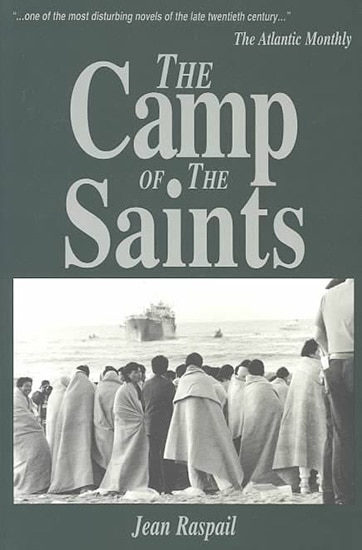A Racist Book’s Malign and Lingering Influence
Elian Peltier and Nicholas Kulish, New York Times, November 22, 2019

One morning in 1972, the French author Jean Raspail was at his home on the Mediterranean coast when he had a vision of a million refugees clamoring to enter Europe.
“Armed only with their weakness and their numbers, overwhelmed by misery, encumbered with starving brown and black children, ready to disembark on our soil,” he wrote. “To let them in would destroy us. To reject them would destroy them.”
At the time Raspail was a respected writer best known for his travelogues. But the racist novel that resulted from that episode, “The Camp of the Saints,” would become his most famous, most controversial and, surprisingly, most influential work.
For some 30 years, “‘Camp of the Saints’ has been one of the top two books in white supremacist circles,” said Heidi Beirich, an expert on extremism at the Southern Poverty Law Center. The center leaked emails earlier this month in which the Trump adviser Stephen Miller touted the book to Breitbart staffers as a work with strong parallels to recent waves of migration.
Published in 1973, the dystopian novel details how a flotilla of Indian migrants reach France’s southern coast to invade the country. Political elites fail to respond to the influx, and the continent is overrun. For nearly half a century, the book has stoked fears of immigration that have, to its supporters, seemed increasingly prescient as growing numbers of refugees and asylum seekers have arrived in Europe in recent years.
“Raspail can boast himself about being a prophet,” said Jean-Yves Camus, an expert on the far right at the French Institute for International and Strategic Affairs. “People now buy ‘The Camp of the Saints’ because they want to read the book written by the writer who saw what would happen before everybody else.”
{snip}
Its leader, Marine Le Pen, said “The Camp of the Saints,” which she read at 18, “left a great mark on her,” and urged French people to read it to understand what she described as the country’s “migratory submersion.” Steve Bannon claimed that European countries had been confronted with an “invasion” similar to the one described in “The Camp of the Saints.” Iowa Representative Steve King argued that the book’s story “should be imprinted into everyone’s brain.”
{snip}
The recognition of the place held by “The Camp of the Saints” in such circles may have reached a new high last week, when it was revealed that Miller, President Trump’s influential immigration adviser, had cited it.
In September 2015, while European countries struggled with an immigration crisis, Miller encouraged Breitbart editors to write about Raspail’s book. Three weeks later, the conservative website ran a story noting that, like in the novel, contemporary Western leaders were “urging on ever larger waves” of immigration, and may well be “unable to erect walls.”
{snip}
The title is taken from the Book of Revelation in the Bible, a reference to the army gathered by Satan who overrun the earth, including the camp of the saints. Raspail drew on his experience documenting endangered communities in Latin America and elsewhere to imagine what waves of outsiders would mean for France’s culture, language and population.
{snip}
In France, a new edition published in 2011 became a best seller. The book was published for the first time in Dutch in 2015. That same year a right-wing press republished it in German.
{snip}















